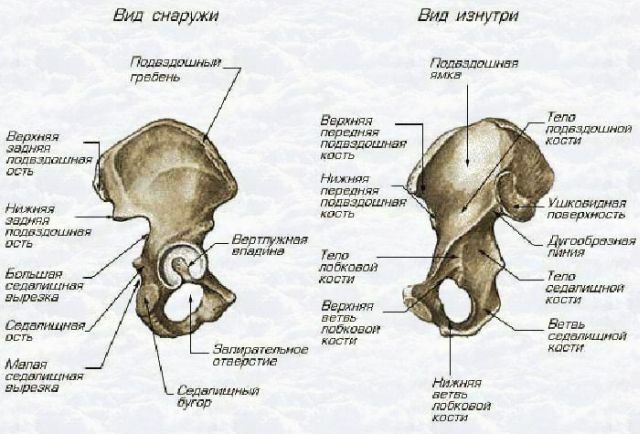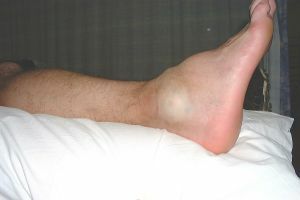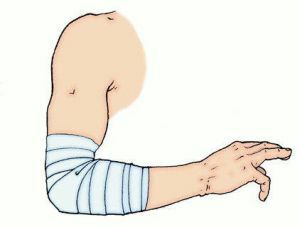 Bruises and sprains lie in wait for us almost everywhere, and it affects both adults and children.
Bruises and sprains lie in wait for us almost everywhere, and it affects both adults and children.
Too much activity can lead to falls, after which the upper and lower limbs suffer, and more specifically the elbows and knees.
There is nothing terrible in these injuries, but it is not enough to disinfect the wound, it is also necessary to properly apply the appropriate bandage.
For a reliable wound dressing, a turtle bandage is used, but it will be discussed a little later.
Article Contents
- common injuries of the elbow
- Dislocation
- Bruising
- Common knee injuries
- major knee injury
- Types turtle catches
- elbow Fixing
- Detailed instructions for knee fixation
- Advantages and
- disadvantages as
conclusion Common elbow injury
damage these jointsare fairly common, so you need to understand the types of injuries and timely provision of first-aid.
You can hurt your elbow in various ways. Virtually any injury to this part of the limb takes place with sensitive pain sensations of varying degrees.
Elbow can be damaged if dropped and as a result get a dislocation, ligament rupture or fracture. In addition to obvious mechanical injuries, there are overload injuries to the elbow, for example, after a long physical exertion in the gym.
Dislocation of
When the elbow is dislocated, the skin in the affected area turns red over the injured vessels, the swelling arises, the shape of the joint changes and this is all accompanied by severe pain.
In case of injury, the damaged joint is securely fixed for at least 18-20 days. After that, rehabilitation procedures are prescribed( massage, gymnastics).
Contusion
As a rule, a serious injury of the elbow joint is accompanied by appreciable pain and leads to immobilization of the elbow. 
Operative actions for such injuries are the immobilization of the elbow joint.
And further imposition of a cold object( ideally a compress) and further anesthesia with medications.
Common knee injuries
The knee joint in the human body is the largest and most complex, compared to others. For various reasons this joint gets injured more often than others.
Most of the injuries can be cured without resorting to surgical manipulations, but a serious knee joint injury can put the patient on the operating table.
The main injuries of the knee
These include: damage to meniscuses and cruciate ligaments, bone fractures and hemoarthrosis( hemorrhage).
It is important to know that such injuries can be combined, for example, tearing the meniscus and the cruciate ligament.
The cause of such damage is mainly unsuccessful falls from height to feet and knees. Each damage to this joint can be accompanied by swelling, pain, hemorrhage, etc.
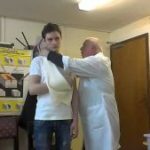 An effective way to immobilize is a kerchief dressing. What methods of imposing exist you can learn by reference.
An effective way to immobilize is a kerchief dressing. What methods of imposing exist you can learn by reference. On when it is recommended to apply modern pneumatic tires, what rules and nuances exist.
Types of turtle locks
Turtle bandage - is one of the types of drugs that are imposed on the injured knee and elbow joint.
Turtle dressing can be of two types of overlapping: convergent and divergent .
The difference between a convergent and divergent bandage, for the elbow and knee joint is that the first is superimposed on the periarticular regions of the limb, and the second is applied to the injured joint itself.
In other words, the convergent dressing is superimposed first with circular rounds on the top and bottom of the damaged joint.
The application of a divergent dressing begins with the same circular rounds around the center of the injured elbow or knee joint.
The advantage of such ways of imposing is that with proper execution of all the necessary instructions for applying the bandage, there comes a long-awaited relief, pains in the victim in the traumatized area decrease.
Fixation of the elbow
We have already found out that the turtle bandage on the injured elbow joint is convergent and divergent, the first fixes the areas near the joint, the second - the joint itself.
The convergent dressing on the injured elbow joint is imposed in the following way:
- the patient bends the arm at the elbow at an angle of 90 °( determine by eye);
- region of the forearm is conditionally divided into three equal zones;
- The bandage should be applied from the lower area of the forearm;
- arm wrap three to four times to securely fix the upper limb;
- then, perform ten eight-shaped turns, which gradually converge to the injured joint;
- the final turn of the bandage is applied to the center of the elbow;
- with the help of a staple or pins fix the end of the bandage.
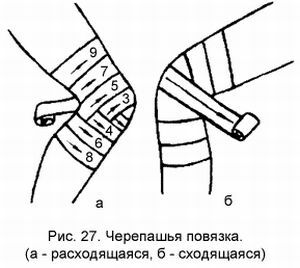
The divergent bandage on the injured elbow is superimposed fairly simply, but in the opposite order:
- , the injured patient bends his arm at the elbow, under the same degree( 90 °);
- fix the first end of the bandage on the damaged area;
- then, make 4-5 turns in the center of the elbow joint;
- the eight-shaped windings should be imposed in a detached order from the injured zone;
- the last coil of bandage is applied in the upper region of the forearm;
- the end part of the bandage is fixed with the help of pins.
It is unforgettable that in the center of the elbow joint it is important to cross the bandage. The process of the bandage itself can cause pain in the injured patient, especially in children.
Before applying the bandage it is necessary to prepare the patient mentally, to calm the child. Successful application of a turtle bandage is possible only with a calm victim.
In the video you can see the step by step application of a turtle bandage on the elbow.
Detailed instructions for fixing the knee
The application of the bandage to the knee joint is carried out after a number of preparatory actions.
First of all you need to wash your hands clean( preferably wear gloves).
It is important to prepare the victim morally, as the procedure can be painful.
The end of the bandage is held in the left hand, and the reel in the right hand. Do not tighten the bandage.
A converging turtle bandage on the knee joint is superimposed as follows:
- knee bend at an angle of 100 °;
- do 3-4 circular turns( tours) above the knee joint;
- we deduce a bandage at an angle( figure-eight) to the flexion area of the knee joint, with a bandage wound behind the back of the victim's thigh;
- we re-bandage the hip and remove the bandage to the circular loops, overlapping each previous layer by 2/3;
- subsequent turns are superimposed in the same directions, heading towards the center of the injured knee joint;
- the last circular turn is fixed in the center of the joint;
- check the quality and correctness of the applied bandage so that it completely closes the injured zone.
Divergent dressing:
- the injured knee is bent at an angle of 120 °;
- then, perform fastening turns in the injured area of the joint;
- on, we bring the bandage to the knee area in the center direction;
- make sure that each turn overlaps the previous one by 1/2;
- turns of bandage criss-cross in the popliteal groove( pit);
- fixing coil superimposed at the top and bottom of the knee joint.
In principle, convergent and divergent dressings are identical in overlap. The difference is only in the area with which the process of bandaging begins.
The turtle bandage on the knee is superimposed along the same pattern as on the elbow joint. The main thing is a careful overlap of each turn, so as not to cause a pain shock in the patient.

Advantages and disadvantages of
In the case of prompt application of a bandage to the elbow or knee joint, in some cases it is possible to prevent a visit to the doctor.
Emergency application of the bandage in such cases significantly reduces pain in the patient, prevents the ingress of microorganisms into the wound and causes a rapid recovery.
With competent execution of all the necessary stages of this manipulation, there is bound to be relief of the general condition of the patient, and pain symptoms are significantly reduced.
As a rule, this dressing has no pronounced shortcomings. The only thing that can be noted is the possible allergic reaction to the bandage.
As a conclusion
Having learned to properly apply the banade, you can timely provide first aid to yourself and others.
The main thing is not to make mistakes when carrying out this manipulation:
- Bandage on the knee or elbow joint is too tight, which can cause swelling, pain, lack of
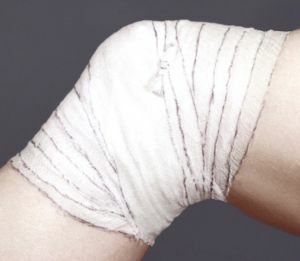 sensitivity.
sensitivity. - With a weakly applied bandage, the bandage will quickly slip, and such a bandage is useless.
- It is necessary to make the first fixing turns, otherwise the bandage will become unusable, etc.
Practical lessons on the imposition of a turtle bandage on the injured joints of the lower and upper extremities will allow you to learn how to promptly provide first aid to yourself and the injured.

